Myopia and How to Manage It
Myopia, commonly known as "short-sighted" or "near-sighted" vision, refers to blurry long-distance vision. While individuals with myopia can see objects up close clearly, such as when reading or looking at a phone, they struggle with seeing words and objects clearly on a blackboard, television, or while driving.
Normally, the eye’s lens and cornea focus light into an image on the retina. In nearsightedness, this light is focused in front of the retina, causing a blurry image or vision while looking at distant objects and the need to squint while looking at faraway objects. Myopia treatments such as glasses and contact lenses focus on aiding people to see faraway objects.
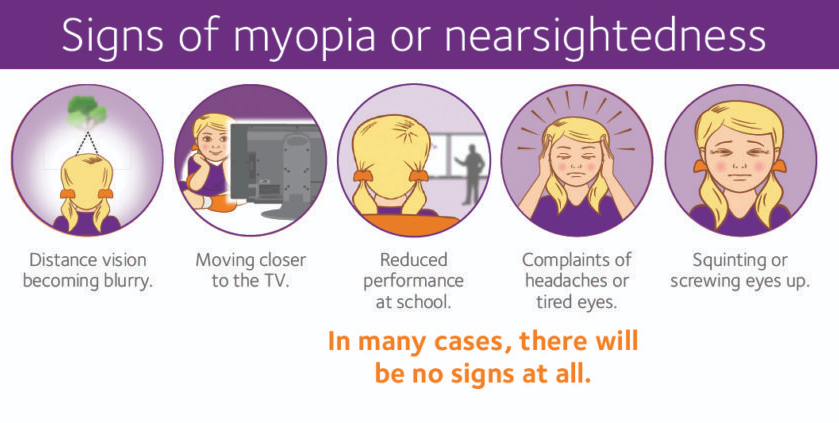
However, addressing myopia requires more than just wearing glasses.
The prevalence of myopia among 12-year-old Australians has doubled in a span of six years. In children, myopia tends to progress and worsen throughout childhood, and higher levels of myopia are associated with an increased risk of eye diseases in adulthood.
If your child already wears glasses, there are steps you can take to prevent their vision from worsening. If your child does not wear glasses, it is important to assess their risk of developing myopia.
Currently, myopia affects approximately 80 million children worldwide, and this number is expected to reach around 5 billion people globally, accounting for 50% of the population. Moreover, the average age of myopia onset is progressively becoming younger, with it being 11 years old in 1983 and 8 years old in 2000. It is crucial to take breaks from close work and device use, ensuring good lighting, and looking into the distance.
What causes myopia?
Both genetic factors and lifestyle choices contribute to the risk of your child developing myopia.
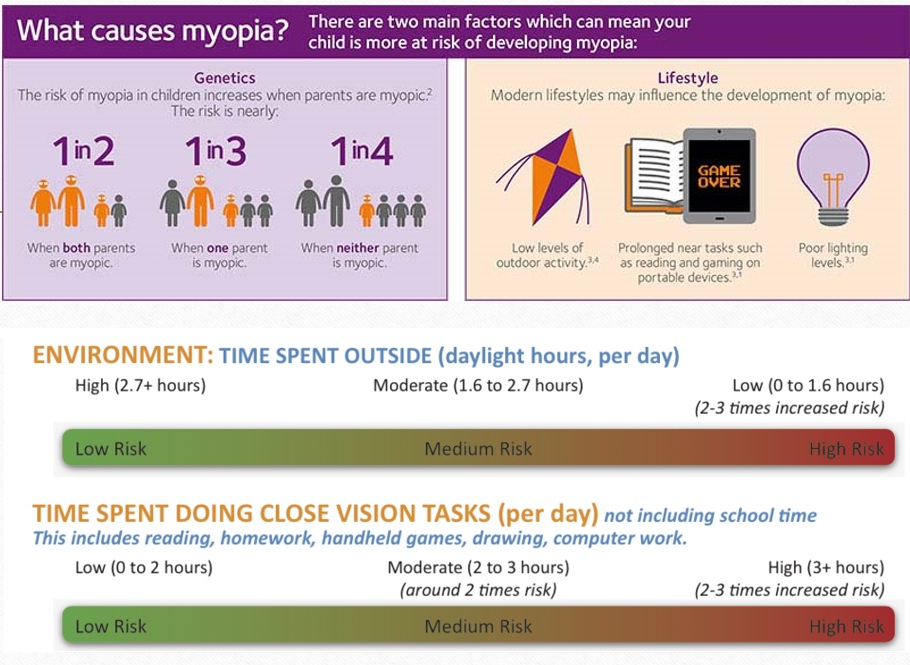
What can you do to help your child?
Encourage outdoor activities.
Children are spending less time outdoors compared to before. Spending time outdoors in bright natural sunlight helps protect the eyes from developing myopia. It is recommended that children spend at least 90 minutes a day outdoors, and even if they follow sun protection measures such as wearing a hat, applying sunscreen, and sunglasses, they will still receive the protective benefits.
Maintain appropriate reading distance.
Research indicates that holding reading material too close requires increased effort, which can contribute to myopia progression. The distance between your child's knuckle and elbow (the Harmon distance) should be the same distance they hold a book.
Take breaks from close work and device use.
It is essential to take breaks from extended periods of near work and focus on distant objects. A simple rule to remember is the 20/20/20 rule: every 20 minutes, focus on an object at least 20 feet away (6 metres for us) for 20 seconds. Taking a 10-15 minute break every 50 minutes also helps improve concentration and relaxes the eye muscles.
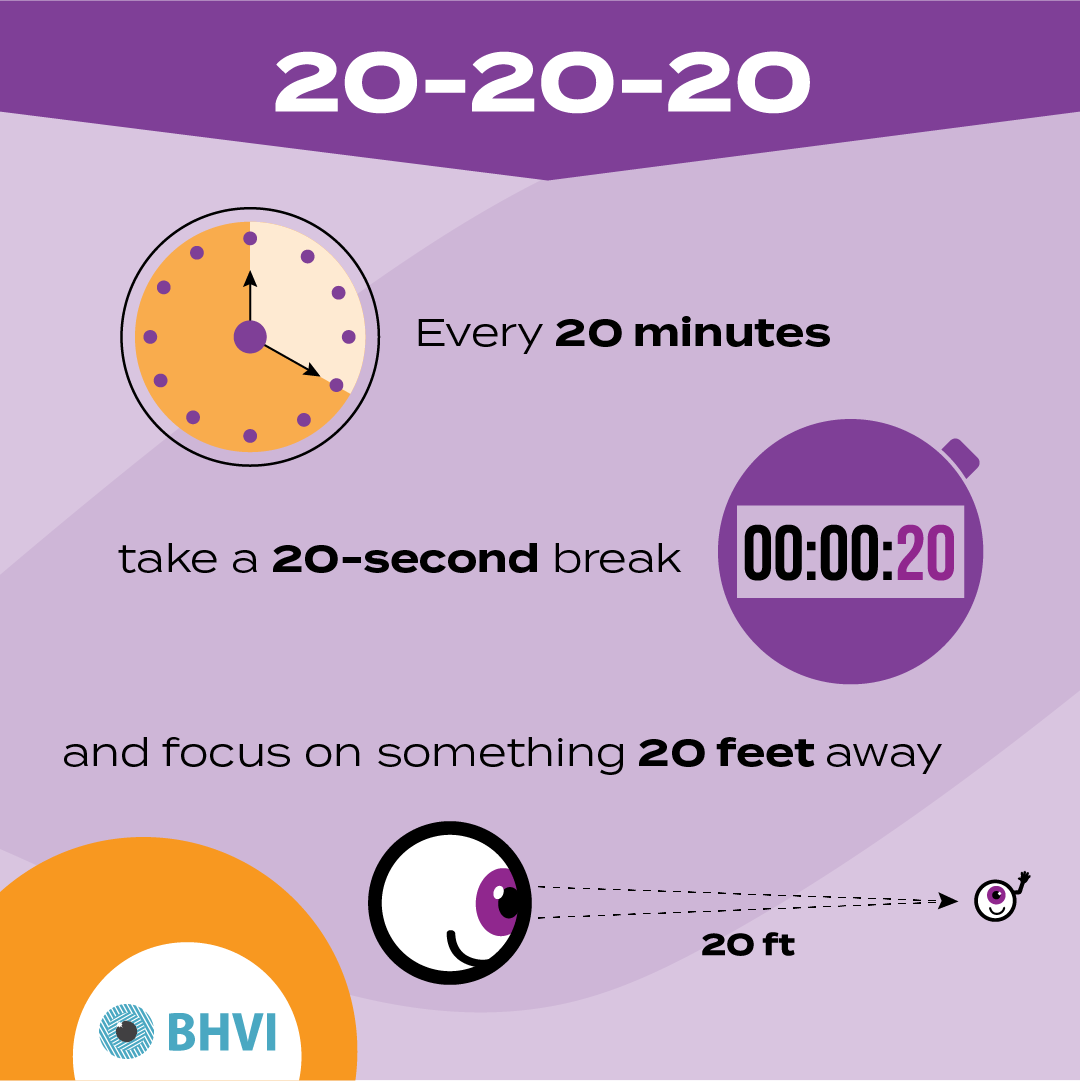
Consult us myopia control experts.
There is now a wealth of scientific research, studies, and treatments available that demonstrate the ability to significantly slow down the progression of myopia.
Eyesight Optometrist takes pride in offering reliable, safe, and proven treatment options for myopia control. Contact us for more information on how to protect your child's vision.
Diagnosis
Early diagnosis is crucial for developing an effective treatment plan for myopia. Treating myopia early can slow its progression and reduce the risk of future eye health issues.
It is important to have your child's eyes examined regularly, starting from the beginning of primary school and then every two years as recommended.
What are the risks associated with myopia?
For children, the primary challenge arises when they have difficulty viewing the board at school and keeping up with their schoolwork.
Wearing glasses can also be inconvenient for sports, and approximately 40% of children report discomfort while wearing them.
However, the greatest risk lies in the future. Adults with myopia have a significantly higher risk of blindness. Individuals with high myopia (over -5.00) are over 20 times more likely to develop sight-threatening conditions such as retinal detachment, myopic macular degeneration, or cataracts compared to those without myopia.
What options are available for managing myopia?
Promote outdoor time.
Encouraging children to spend at least 90 minutes a day outdoors can decrease their risk of developing myopia.
Regular glasses or contact lenses.
These options provide clear vision and may require frequent updates as your child grows. However, regular glasses have little to no effect on slowing down the progression of myopia. Our optometrists no longer consider glasses as the preferred treatment option for myopia.
Explore Myopia Control Management
Significant scientific research suggests that modifying environmental factors and behaviours can delay the development of myopia, and implementing evidence-based treatments can slow down its progression once diagnosed.
Myopia Control Treatment Options
Eyesight Optometrist is proud to offer a range of treatments that are supported by evidence-based advice for myopia control. We stay updated with the latest advancements in the field and ensure reliable and effective treatment options for our patients.
MiSight Soft Daily Disposable Contact Lenses
MiSight contact lenses incorporate a specialised optical design that not only enables clear vision for children but also significantly slows down the progression of myopia, potentially reducing it by more than half (up to 72% when used as instructed).
Our Myopia Control Management takes a comprehensive approach to minimise the advancement of myopia by combining the use of MiSight contact lenses with lifestyle strategies that promote better eye health. By adopting this approach, we aim to:
- Decrease the likelihood of developing high levels of myopia (greater than -6.00D), consequently reducing the risk of eye conditions associated with nearsightedness, such as retinal detachment and glaucoma.
- Provide the convenience of daily disposable lenses, eliminating the need for cleaning, disinfection, and concerns about misplaced lenses.
- Potentially enhance the self-esteem of children and teenagers by enabling their active participation in sports and improving their social acceptance.
- Ensure optimal eye health and comfort through low dehydration rates, efficient oxygen transmission during daily wear, and all-day comfort.
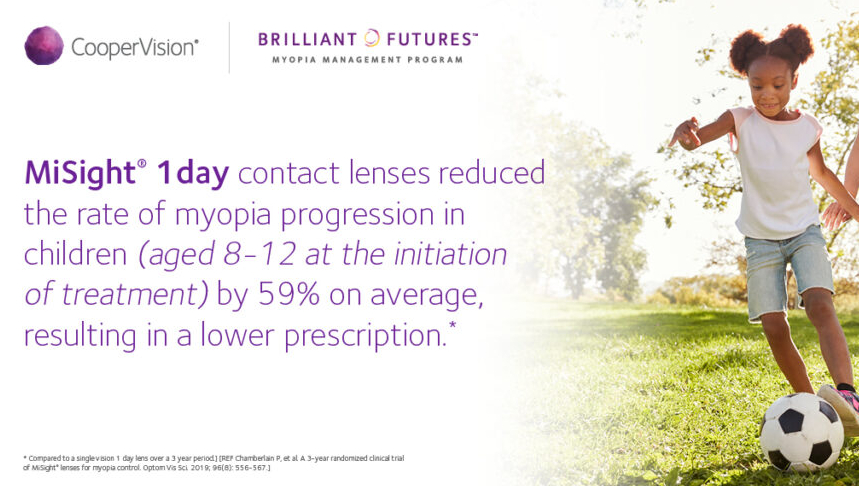
Atropine Eye Drops to Reduce Myopia Progression
When used as directed, the application of low dose Atropine Eye drops once a day, specifically at night, has been demonstrated to decelerate the advancement of childhood myopia by approximately 67% on average. These eye drops serve as a convenient treatment option if your child is not yet ready for contact lenses or if myopia-reducing spectacles are not viable. It is important to note that while undergoing Atropine treatment, your child should continue wearing their regular distance glasses to maintain clear and comfortable vision.
Our Optometrist will provide a prescription for the Atropine Eye Drops, which you can have filled at a pharmacy. In some cases, these drops may need to be compounded by a specialised pharmacist, and we can assist in coordinating this process. Low dose Atropine has minimal effects on pupil size, accommodation, and near vision, and it is generally well tolerated by patients. Upon initiating Atropine treatment, we schedule follow-up appointments the day after commencing the drops, then at 1 week, 3 months, and 6-month intervals to ensure your child's comfort. Long-term reviews every 6 months are advised.
How do Atropine Eye drops slow down the progression of myopia?
Atropine functions by blocking the activity of acetylcholine, a chemical that relaxes the ciliary muscle of the eye and causes the pupil to dilate. By inhibiting these processes, Atropine reduces the elongation or "growth" of the eyeball, effectively slowing down the progression of myopia.
Stellest Myopia Control Spectacle Lenses
Essilor Stellest lenses are a type of advanced spectacle lens designed to correct and manage myopia progression in children. Essilor Stellest lenses have been shown to significantly reduce myopia progression in children. According to clinical studies, these lenses have demonstrated an average reduction of myopia progression by approximately 59% over a two-year period compared to traditional single vision lenses.
These lenses utilise a technology known as Defocus Incorporated Multiple Segments (D.I.M.S) to provide myopia control. The Stellest lens design incorporates a series of specially engineered zones or segments on the lens surface. These segments have specific optical properties that create different focus points in the peripheral vision while maintaining clear central vision. By manipulating the peripheral defocus, the Stellest lenses help to slow down the elongation or growth of the eyeball, which is a primary factor in the progression of myopia.
The lens segments create a myopic defocus in the peripheral retina, which sends a signal to the eye to inhibit excessive axial elongation. This defocus, combined with clear central vision, helps to regulate the eye's growth and reduce the progression of myopia.
Essilor Stellest lenses are designed to be worn during the day, providing continuous myopia control throughout waking hours. They are typically prescribed for children and teenagers who are experiencing myopia progression.
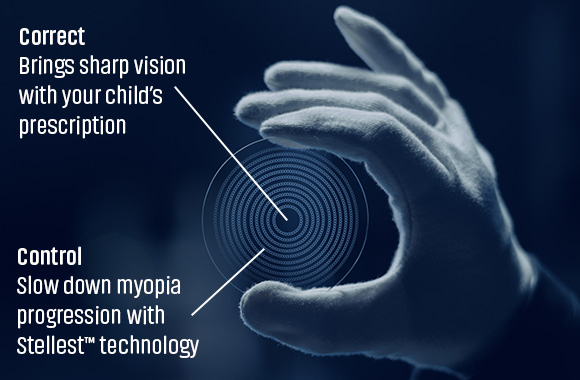

Book a consultation with our optometrist today so we can develop the best
myopia control management plan for you or your child.
References
- Nearsightedness. Mayo Clinic. Nearsightedness - Symptoms and causes - Mayo Clinic. 2022.
- The impact of myopia and high myopia. Report of the Joint World Health Organization-Brien Holden Vision Institute Global Scientific Meeting on Myopia.
- Six Year Refractive Change among White Children and Young Adults: Evidence for Significant Increase in Myopia among White UK Children Sara Jayne Mccullough, Lisa O'Donoghue, Kathryn J Saunders
- Mumsnet research on behalf of Johnson and Johnson Visioncare: Parent’s & children’s views and attitudes about vision correction. 2013
- Myopia and incident cataract and cataract surgery: the blue mountains eye study. Invest Ophthalmol Vis Sci. 2002 Younan C1, Mitchell P, Cumming RG, Rochtchina E, Wang JJ.
- The relationship between refractive errors and retinal detachment--analysis of 1,166 retinal detachment cases. Ogawa A1, Tanaka M.
- Prevalence and progression of myopic retinopathy in an older population, April 2002 Jerry Vongphanit, Paul Mitchell, Paul Mitchell, Jie Jin Wang
- Risk Factors for Open-Angle Glaucoma in a Japanese Population. October 2006 Yasuyuki Suzuki et al
- Myopia prevalence in Canadian school children: a pilot study February 2018 Mike Yang, Doerte Luensmann, Desmond Fonn, Lyndon W Jones et al
- Violet Light Transmission is Related to Myopia Progression in Adult High Myopia December 2017 Hidemasa Torii, Kazuhiko Ohnuma, Toshihide Kurihara et al
- Effect of Accommodation on Peripheral Eye Lengths of Emmetropes and Myopes 2017. Aldossari H, et al
- The impact of myopia and high myopia: Report of the Joint World Health Organization – Brien Holden Vision Institute Global Scientific Meeting on Myopia. University of New South Wales, Sydney, Australia. 16-18 March 2015
- Walline JJ, Jones LA, Sinnott LT. Corneal Reshaping and Myopia Progression. Br J Ophthalmol 20 009;93:1181-1185.
- Lam CSY, Tang WC, Tse DY, et al. Defocus Incorporated Multiple Segments (DIMS) spectacle lenses slow myopia progression: a 2-year randomised clinical trial British Journal of Ophthalmology. Published online first: 29 May 2019. doi: 10.1136/bjophthalmol-2018-313739
- Understanding the new Essilor Stellest spectacle lens - Myopia Profile. 2022